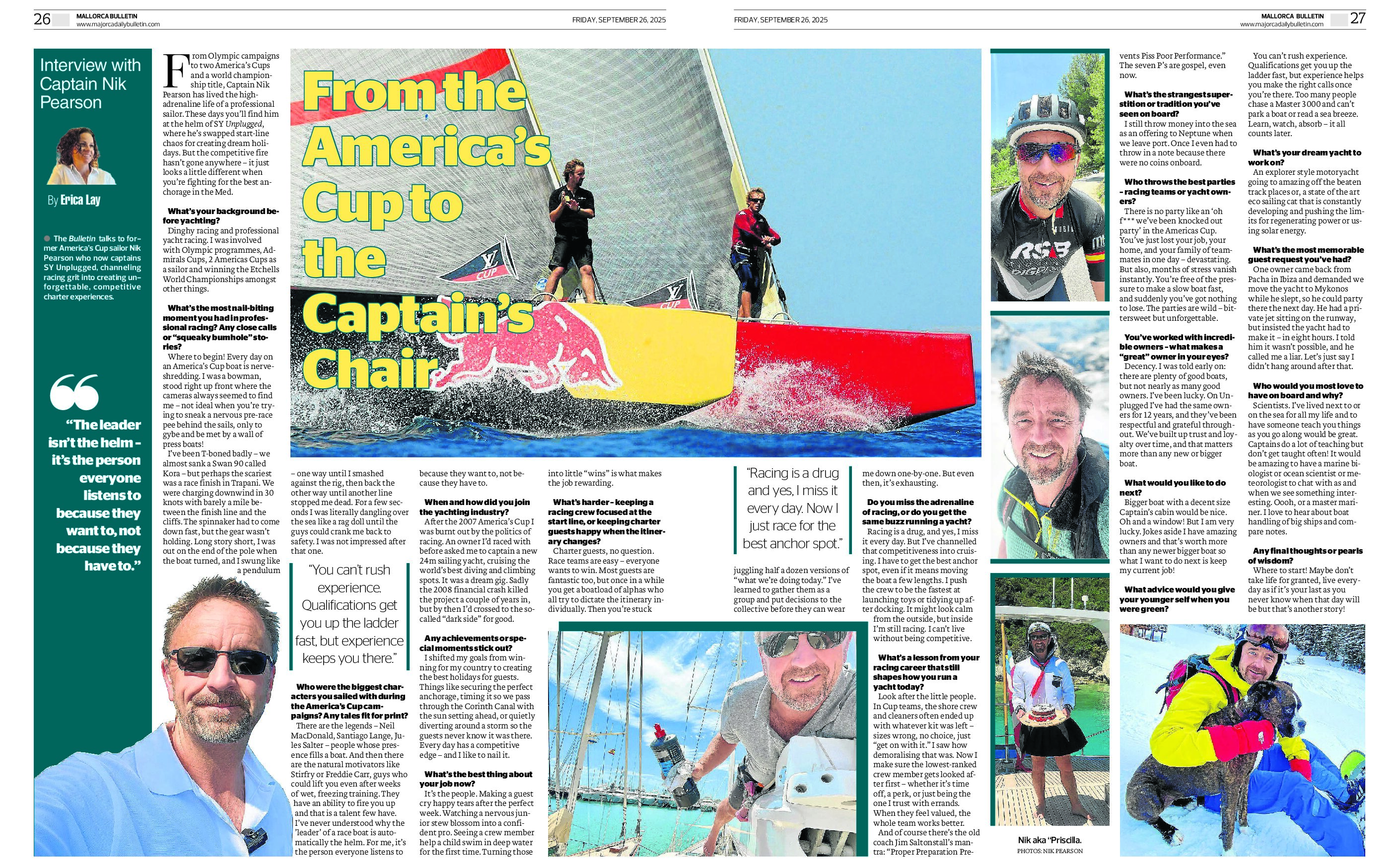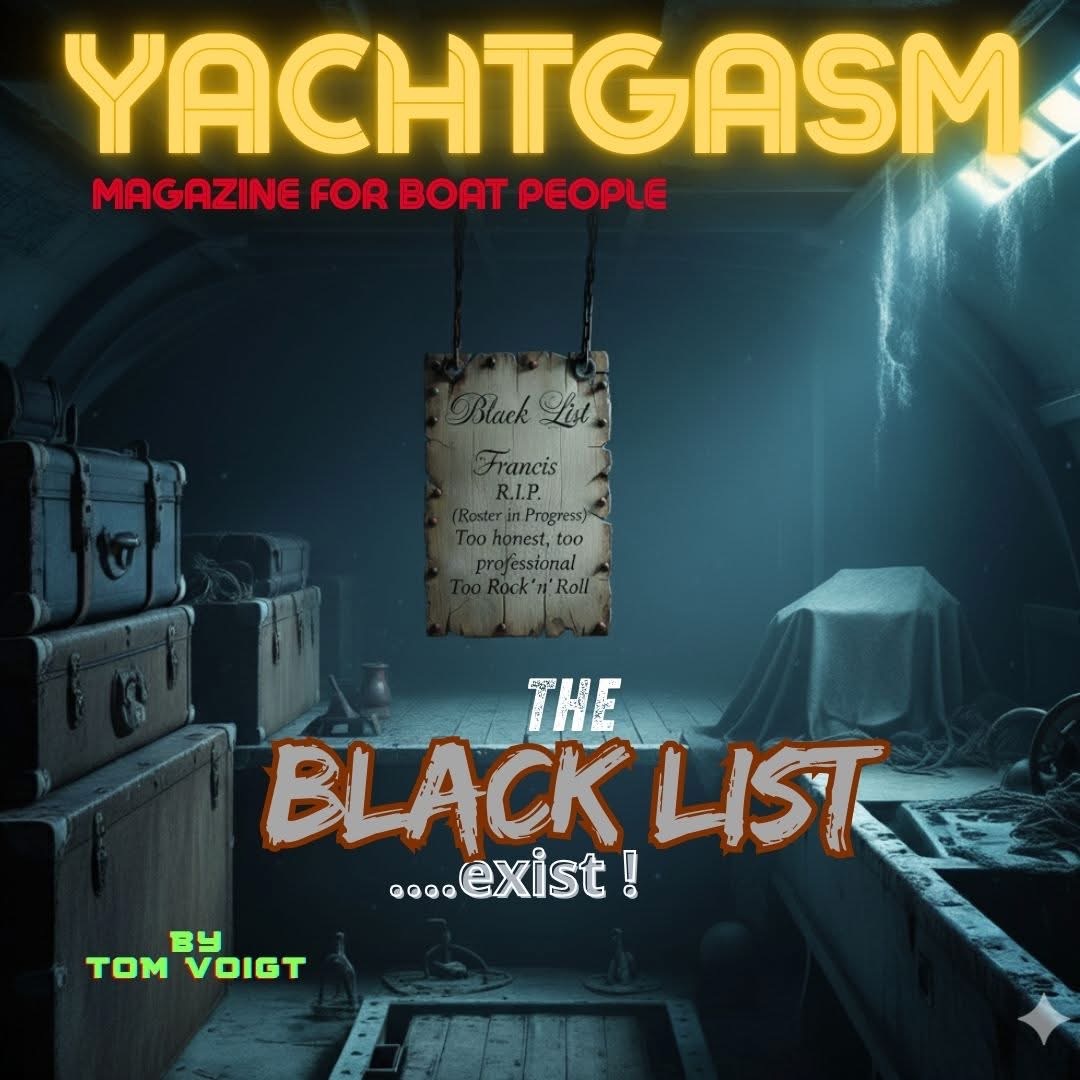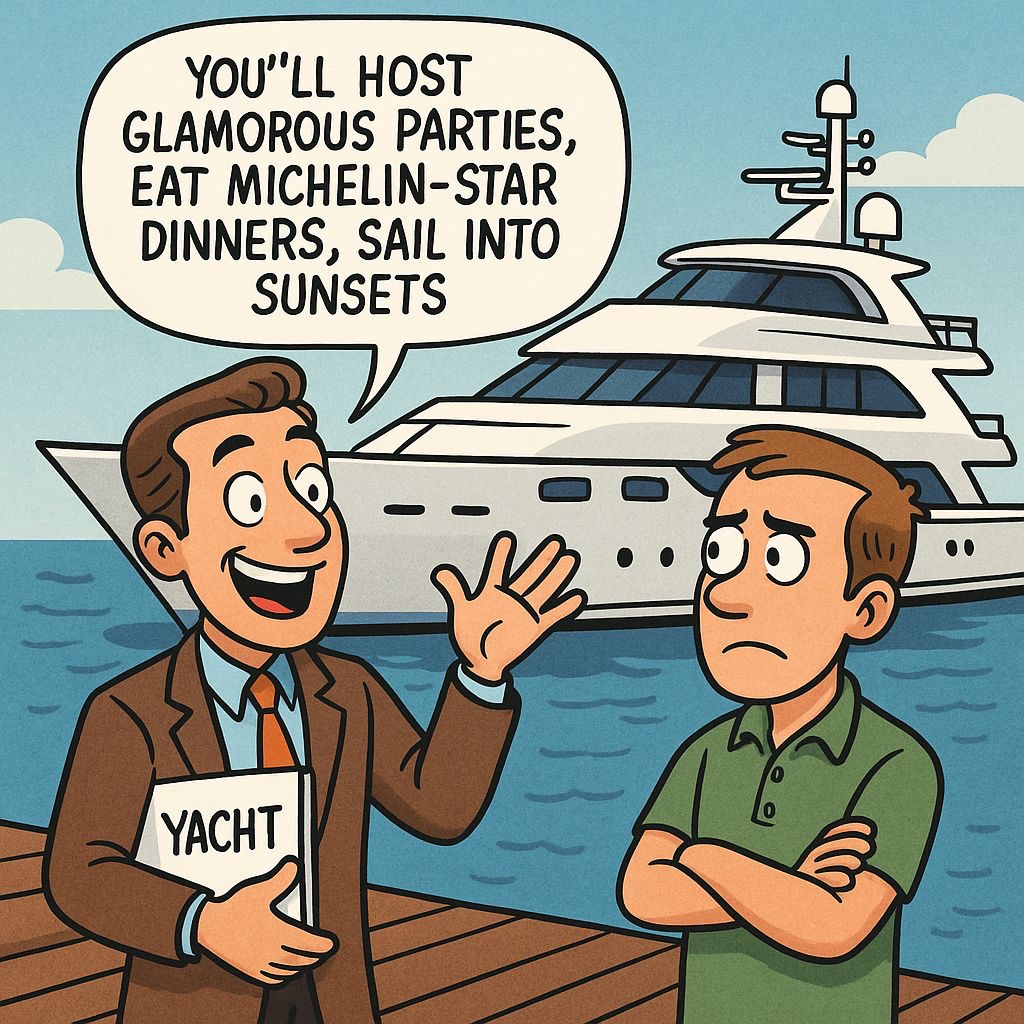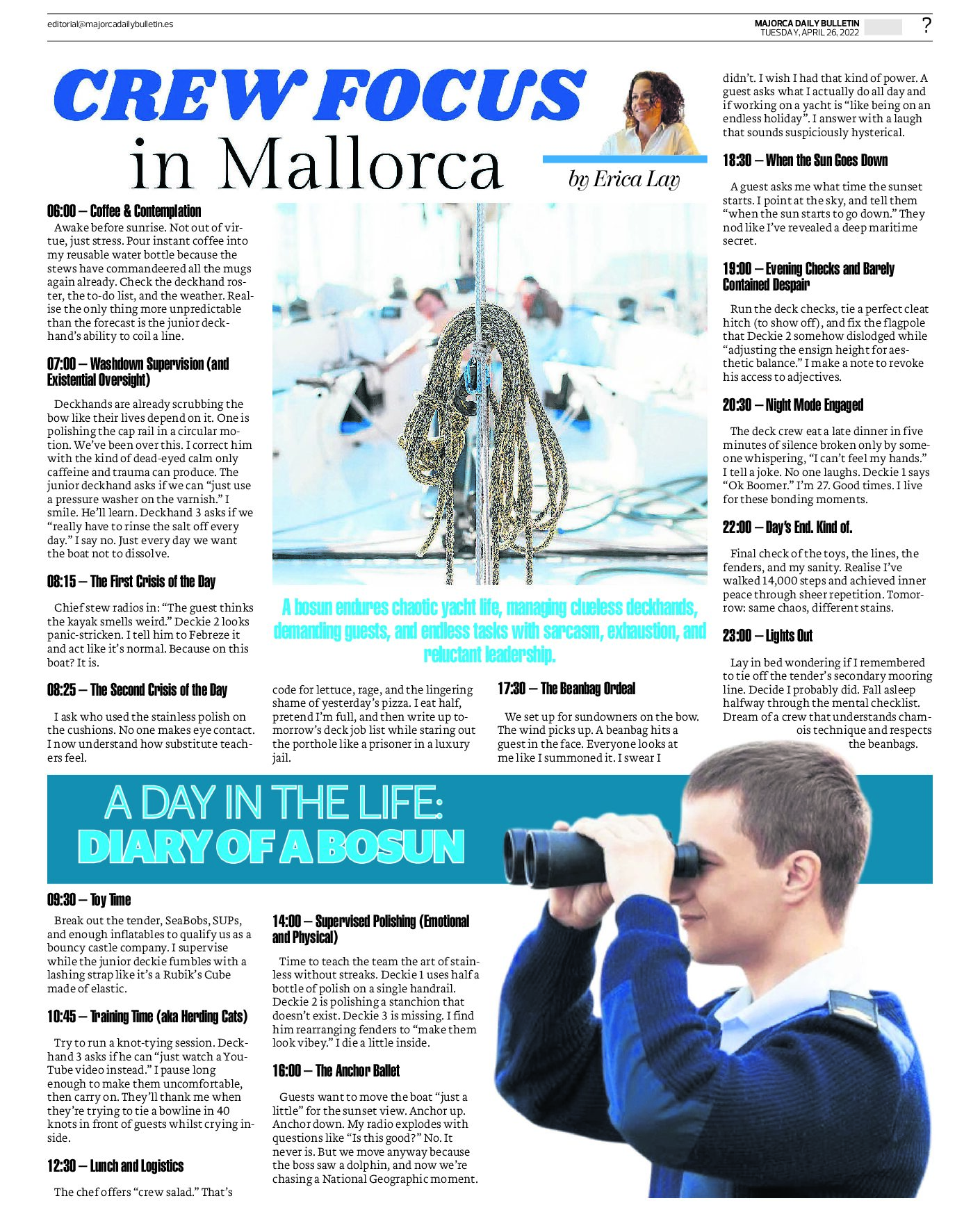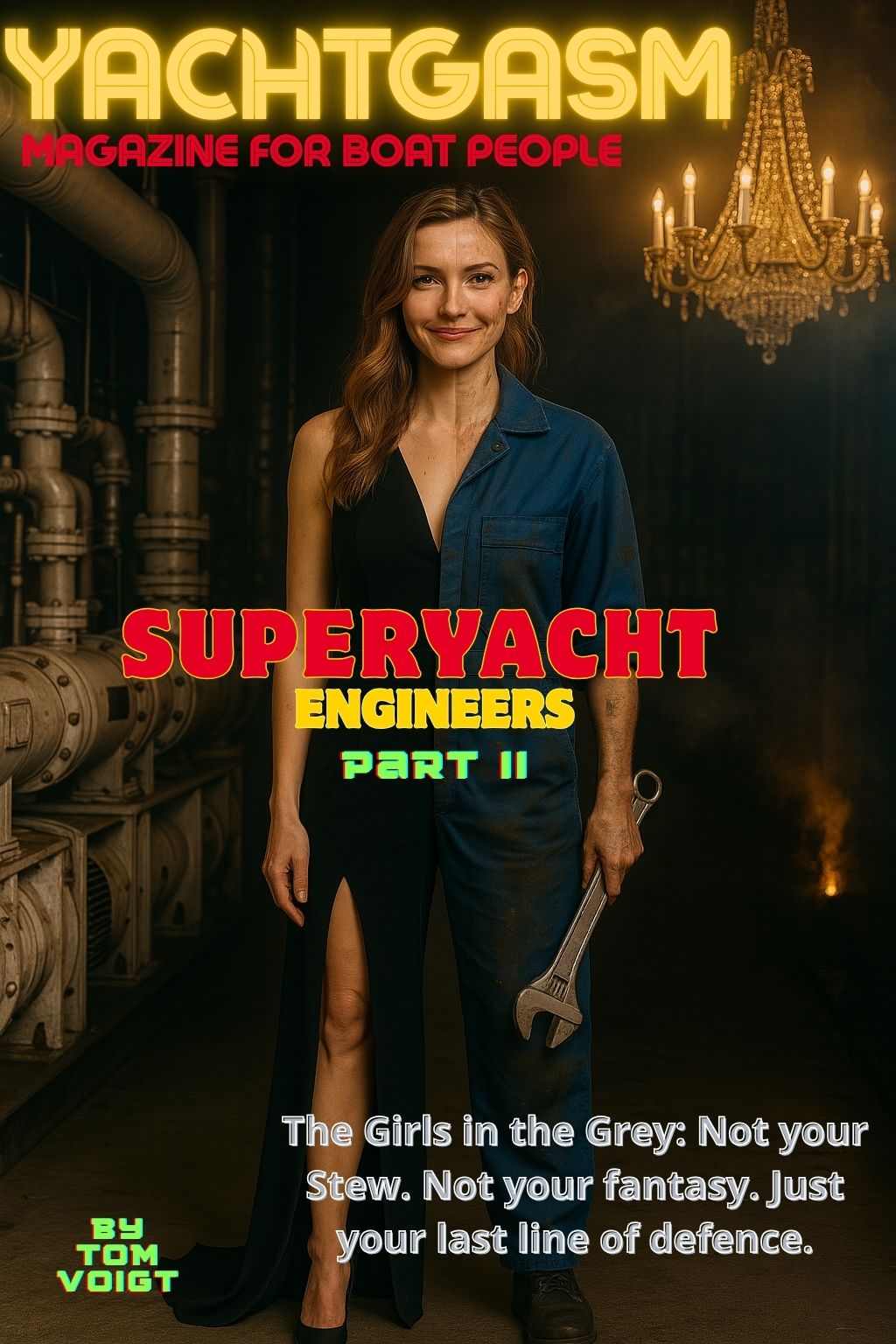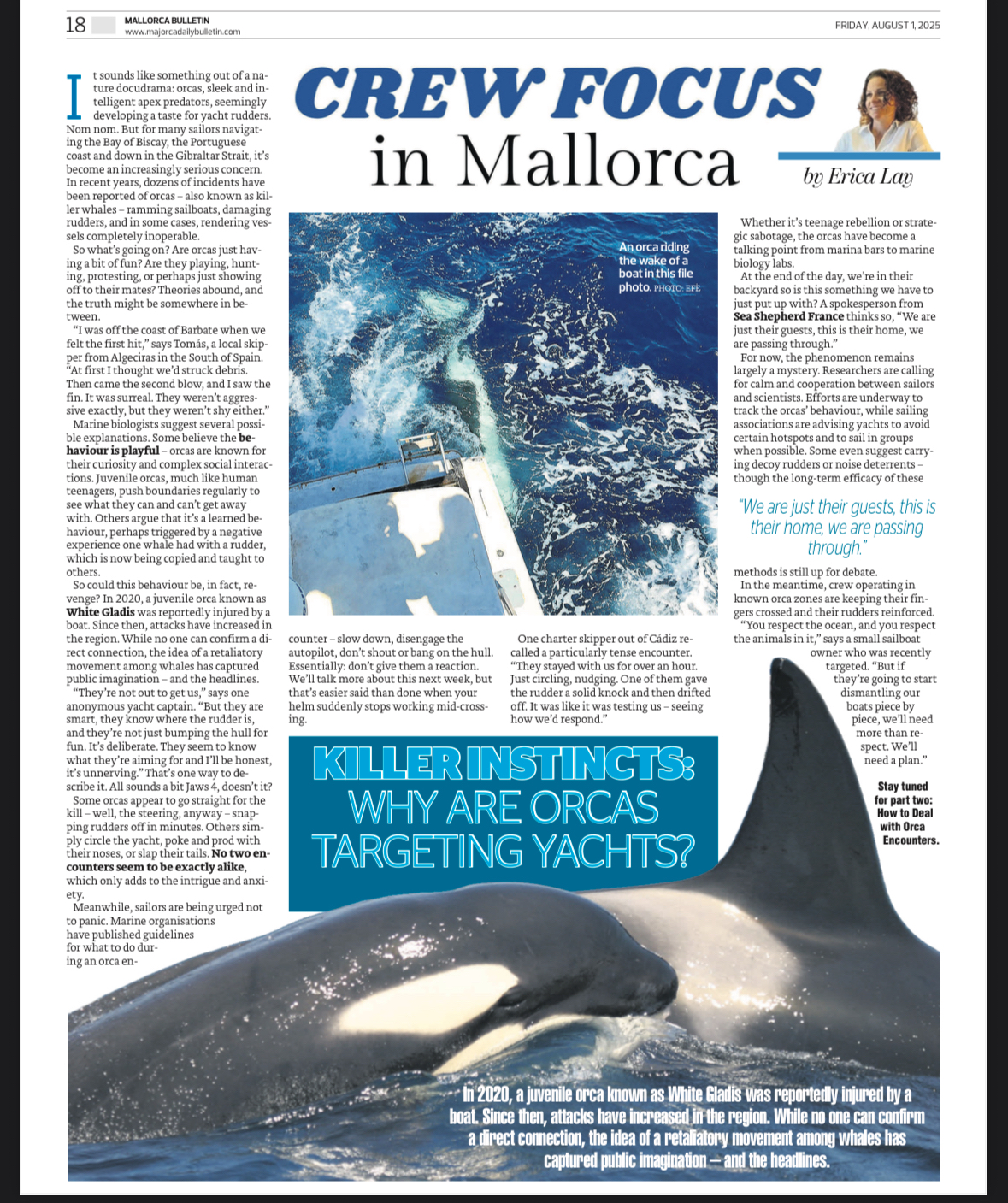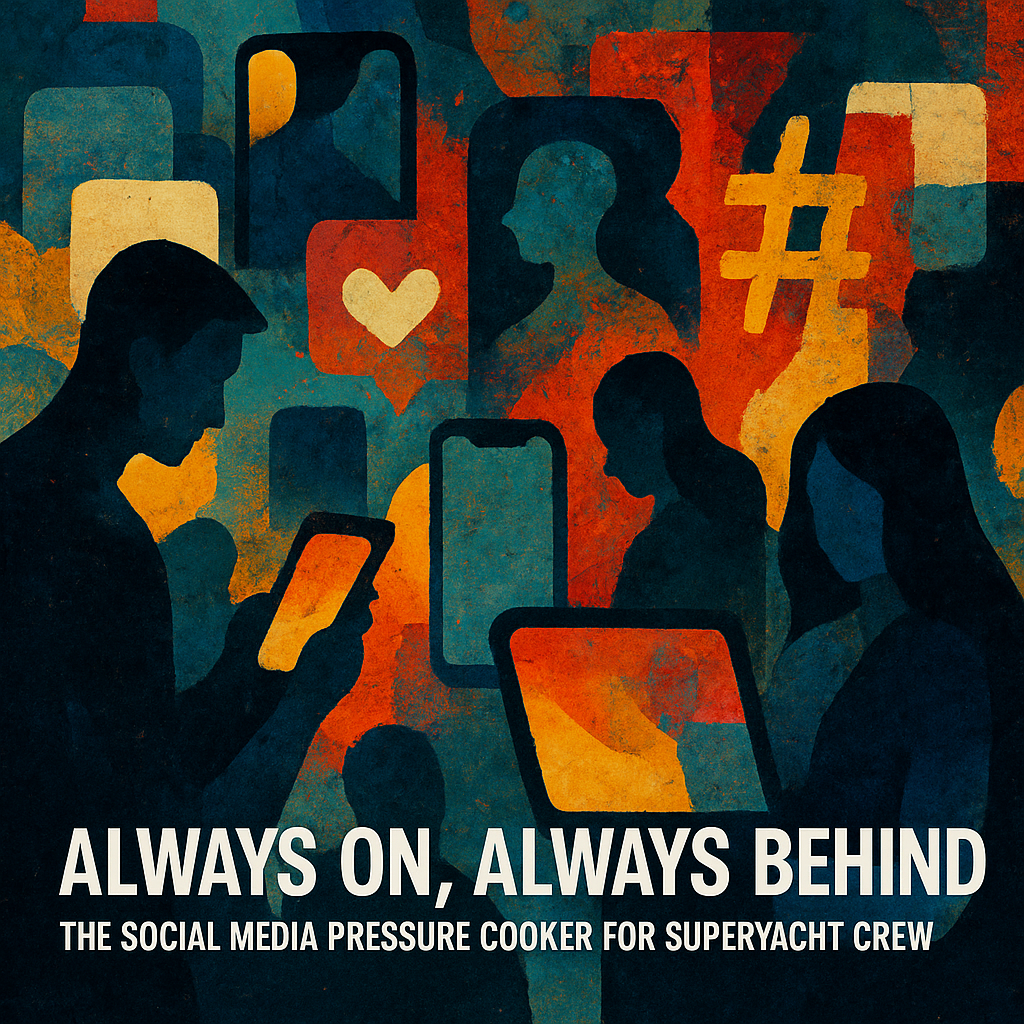With Courtesy of Erica Lay /1058.
Erica Lay owner of EL CREW International Yacht Crew Agency http://www.elcrewco.com/ erica@elcrewco.com
Always On, Always Behind: The Social Media Pressure Cooker for Superyacht Crew
There was a time when being a good crew member meant showing up, staying switched on, and keeping your uniform clean-ish. (Depending on department. Free tip: don’t give engineers a white shirt.) You worked hard, earned your stripes, and if the season was good, maybe clocked up a decent tip or three, a bit of a tan, and a few cracking stories to tell at the crew bar.
These days? It’s not enough to just, well, be good, you have to look good doing it, post about it, hashtag it, and somehow be building a lucrative side hustle in your downtime too.
Welcome to the age of chronic overachievement, fuelled by social media and filtered through the lens of highly curated yacht life. And make no mistake, it’s taking a toll on crew morale, expectations, and mental health.
The Cult of Comparison: Everyone’s Yacht Life Looks Better Than Yours
Social media has always been a highlight reel, but in yachting, that reel comes with superyachts, designer sunglasses, endless magnums of Minuty and Miravall, and sunsets off the Amalfi Coast. It’s a potent cocktail of envy and ambition. Scroll through any crew feed and you’ll see the same themes: jaw-dropping destinations, generous guest tips, and photogenic crew, bonding in exotic places.
What you don’t see are the back-to-back boss trips and charters with no time to breathe in between, the 18-hour days, the engineer crying in the laundry room over a broken steamer, or the deckhand trying to patch a tender in 40-degree Mediterranean heat while hungover and mildly concussed after last night’s sleep deprived stumble into the door frame coming off a 3am watch. You don’t see any of the toxic crew politics, the broken sleep, the high season panic attacks, or the quiet fear that they’re not doing enough, or simply being enough.
This constant, controlled and thoughtfully edited stream of other people’s “yacht life” creates a distorted sense of what success actually looks like. You start questioning why your own experience doesn’t match the vibe. Why you’re not working on a 90m with a beauty fridge and a Brazilian masseuse who’s happy to spend her time massaging crew (as IF), why you’re not getting tips in envelopes thick enough to stand up on their own, why you haven’t yet been flown to Dubai on a private jet just because the guest liked your face and thought you’d be fun to shop with.
All this storytelling fuels a subtle but relentless anxiety: the idea that if you’re not constantly moving forward – higher rank, bigger boat, flashier itinerary, heftier tips, more famous guests – you’re somehow falling behind. And it doesn’t help that the more stylised the posts become, the less you feel like your reality is valid or worth sharing.
Hustle Culture Hits the High Seas
It’s not enough to just do your job well anymore. Excellence is expected, and then some. These days, crew are expected to be multi-hyphenates: stewardesses doubling as yoga instructors, masseuses, hairdressers, nail techs and nutritionists, deckhands who can shoot and edit drone footage, whilst teaching kitesurfing, diving, and are e foil pros, engineers offering crypto tips over dinner, and chefs conjuring up tasting menus whilst simultaneously churning out TikToks from a galley the size of a shoebox.
Side hustles used to be something you picked up after the season. Think more of an exit strategy for life after yachting. Now they’re practically a crew trait. These extra gigs have become a badge of ambition worn with pride (and just a hint of panic). There’s pressure to monetise your hobbies, turn every skill into a service, and somehow “build your brand” while doing turndowns and fighting mould in the guest showers. If someone had said to a yacht crew ten years ago “what’s your brand” they’d probably have said “Marlboro Lights?” and wandered off, slightly bemused, to get another beer out of the eski. The times, well they be a changin’.
But here’s the thing no one’s saying: most crew are already maxed out. After crazy long days on charter, you’re lucky if you have enough cognitive function left to get a sandwich from a plate to your face without giving yourself a black eye, let alone crack on with your design of a passive income stream. The expectation to constantly do more in your spare time creates a creeping sense of inadequacy. Like if you’re not side-hustling, upskilling, or posting about your growth journey (oh please), you’re somehow lazy or falling behind your peer group. You’re failing at life. Can’t we just have a kip? Chat with a friend? Doomscroll funny dog videos until we nod off and drop the phone on our face?
And while ambition is great, the constant push to “add value” or “upskill” (hello again, LinkedIn buzzwords) is frankly just exhausting. There’s a fine line between healthy progression and a quiet identity crisis. You can only chase the illusion of having it all (at once) for so long before you crash.
Rest is no longer seen as recovery. It’s seen as wasted time. And in yachting, where burnout already simmers just beneath the surface, that mindset is an extremely slippery slope.
The Below Deck Delusion
We can’t talk about distorted expectations without addressing the big fat elephant in the room: Below Deck. On paper, it’s been a PR dream, right? They’re bringing the superyacht industry to a global audience, sparking interest in maritime careers, and providing endless “what not to do” material for green crew.
But let’s be honest… it’s also warped the industry’s image beyond recognition.
Remember the days when you could say to someone at home, “I work on a superyacht” and they’d look at you like you’d grown a second head and have absolutely no idea what that even meant? Good times. That was the golden era, when working on a billionaire’s floating gin palace held a delicious sense of mystery and magic.
Now? Say those same words and the reply is instant: “Oh right, like Below Deck.” And you have to fight every fibre of your being not to punch them in the face and scream, “No! It’s NOTHING like Below Deck!”.
Thanks to our friends at Bravo, new crew arrive expecting drama, chaos, designer uniforms, instant fame, and six-figure tips for getting out of bed. Meanwhile, the new-money Below-Deck-fan-guests show up assuming their charter includes flirtatious stews, shirtless deckhands, crew sexscapades, tears, tantrums and a guaranteed meltdown over dinner service. Nightly. The line between scripted television and real-life professionalism has become alarmingly blurry.
But here’s the truth: most of us aren’t throwing wine glasses or storming off docks. Even if we want to. And sometimes, we really, really want to. Instead, we’re quietly managing rotas, battling provisioning logistics, and praying the stabilisers hold through the lunch main course. There’s no theme music. No confessional interviews. Just long hours, hard work, and the occasional war with a vacuum cleaner/Thermomix/bow thruster/generator etc.
Below Deck sells disorder as normality, and glamorises a version of yachting that prioritises performance over professionalism. Worse still, it feeds into the social media cycle, because now normal crew feel the expectation to make their own life look just as outrageous, successful, and story-worthy in order to satisfy their social media audience and stay relevant online.
The reality? The best crew are usually the least dramatic. They don’t need camera angles or cocktail-fuelled conflict. They just quietly deliver exceptional service and keep the yacht, and the team, running like a beautifully understated Swiss watch.
Burnout in the Age of Overachievement
When every time you pick up your phone to have a little mindless scroll the algorithm delivers you the brutal message that everyone else is doing better than you are, looking sexier, earning more, or climbing the social and career ladders faster, it’s no wonder crew are feeling the strain. It’s not just the physical exhaustion of the job, it’s the mental weight of not measuring up to a moving target that doesn’t even really exist.
We’re talking about a deep, creeping, niggly fatigue that doesn’t go away with sleep. That tight feeling in your chest when you open Instagram on a rough week and see another stew living her heavily filtered “dream charter life” with tip envelopes (#sograteful), perfect lighting, and inspirational captions. You were proud of how you handled that last bossy charter guest, but now you’re questioning if you’re even doing enough.
That’s the thing about overachievement culture, it’s a nasty little beast that’s never satisfied. The goalposts move. The dopamine hits wear off. Eventually, even your wins stop feeling like wins when you’re in a constant battle of comparison.
Burnout used to be the result of long hours and intense pressure. Now it’s compounded by digital noise and the need to keep up, not just professionally, but publicly. And because we work in a world where perception can equal opportunity, there’s even more drive to play the part.
The result? Crew who are highly capable but secretly crumbling. Exhausted, anxious, and stuck in a loop of comparison and self-doubt, all while posting beach photos and pretending they’re fine.
Burnout isn’t always dramatic. Sometimes it’s quiet. It’s the feeling of not caring anymore. Dreading your next trip, even though this is the job you always wanted. Wondering if you’re cut out for it, just because you’re not smiling for the camera or launching your fifth personal venture while running on four hours’ sleep and half a can of dry shampoo.
It’s okay to be tired. It’s okay to not be chasing a “next step” for once. And it’s okay to admit that the pressure isn’t just coming from the boss, it’s coming from the phone in your hand.
So… What Can We Do About It?
First off, we stop pretending.
We stop pretending that everyone is thriving. That every season is the best one yet. That if you’re not double-tasking your charter job and your side project and your personal brand, you’re somehow doing it wrong. That’s just not real life, and the longer we play along, the more pressure we pile on each other.
There’s power in being honest. In saying, “I’m knackered and I want to just lie on my bunk and binge watch a whole season of housewives on my day off.” Or “This job is amazing, but also it’s really hard and sometimes I want to scream.” There’s power in resisting the urge to filter every moment into something worth posting.
The best way to push back against hustle culture and chronic comparison? Value what you do, even if no one else sees it. If it doesn’t go on social media, did it even happen? Spoiler alert: yes, it absolutely did! There’s a real freedom in not posting everything online. Try it.
Also make sure to stop and find pride in the small wins. The well-packed guest suitcase. The avoided provisioning meltdown. The crewmate you quietly helped through a bad week (without posting a sad face selfie to tell everyone how you don’t want praise because you’re just being a good person #payitforward).
Success doesn’t always have to be loud, glamorous, or Instagrammable. Sometimes it looks like a clean uniform, a respectful team, and a good night’s sleep.
As an industry, we need to make space for crew to just be crew, not personal brands, not content creators, not constant performers. There’s nothing wrong with ambition. But ambition without rest, realism, and the occasional reality check? That’s just burnout with better lighting.
So, take the pressure off. You don’t need to prove anything to anyone, least of all to a scrolling audience who don’t know the difference between back-to-back and a breakdown.
Work hard. Rest harder. And if you’re going to compare yourself to anyone, let it be the version of you that started out in this industry: green, nervous, and hopeful. Because you’ve come a long way. Even if you didn’t post about it.

